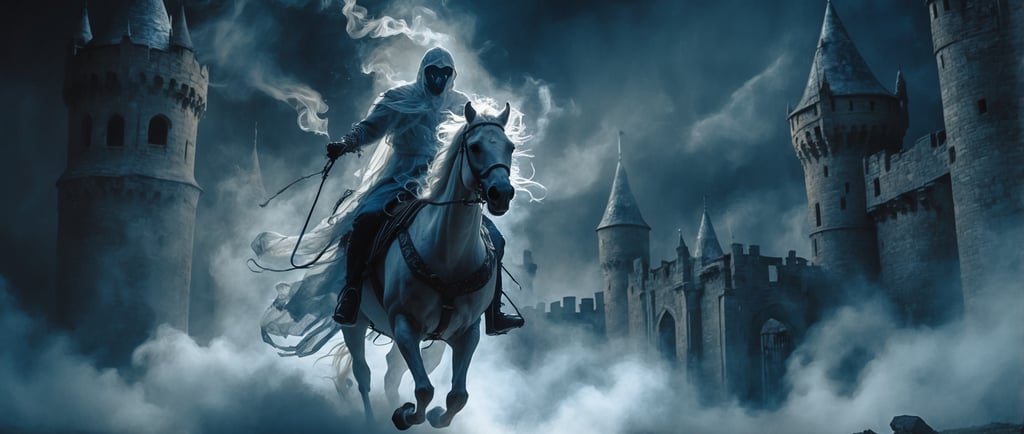The AI Video Revolution: 5 Ways It Will change the World As We Know It
Explore how AI-generated video will transform entertainment with 5 key predictions. From indie filmmaker renaissance to global storytelling democratization, discover how tools like Runway and Kling are reshaping YouTube, animation, and the future of visual storytelling.
AI ANIMATIONENGLISH
Nelli Kite
5/1/20254 min read


We're standing at the edge of a transformation as profound as the shift from silent films to talkies. AI-generated video isn't just a new tool—it's a complete reimagining of how visual stories are created, distributed, and consumed.
Let's explore what happens when anyone can conjure moving images from text prompts, and how this will reshape our digital landscape.
1. The Great Creative Redistribution
The traditional animation and VFX industries are about to experience serious disruption. Tasks that once required teams of skilled artists may soon be accomplished by a single creator with the right prompts.
But here's the fascinating twist: rather than simply eliminating jobs, AI video is likely to cause a massive redistribution of creative roles. While demand for traditional keyframe animators might decrease, we're already seeing new positions emerge:
Prompt engineers who specialize in coaxing the perfect visuals from AI systems
Visual directors who combine AI-generated elements with human creative vision
Technical artists who know how to enhance, fix, and integrate AI outputs
Style consultants who develop unique visual languages for projects
The studios that survive will be those that embrace AI as a collaborator rather than a replacement. We might see boutique animation houses specializing in fine-tuning and customizing AI outputs, while larger studios use these tools to tackle previously impossible projects in scope and scale.
2. The Indie Filmmaker Renaissance (and Its Challenges)
Anyone who can afford the subscription fees for tools like Runway, Veo or Kling or have a powerful computer with modern graphic card that can run ComfyUI can generate AI videos and make films and animations that starting to look more and more like the real thing. This democratization of filmmaking tools represents perhaps the most significant shift in visual storytelling since the introduction of affordable digital cameras.
But this renaissance comes with complications. When everyone can create cinematic content, how do we avoid drowning in an ocean of mediocrity? I predict several developments:
Content curation will become increasingly valuable, with tastemakers and communities rising in importance
Technical execution will matter less than unique vision and storytelling
We'll see the emergence of "AI-native" art forms that embrace the unique aesthetics and capabilities of these tools
Early-adopter advantage will be significant but temporary
The most successful indie creators won't be those with the best prompts, but those who use these tools to express something genuinely personal and distinctive.
3. Platforms Evolve or Die
YouTube, TikTok, and other video platforms aren't just facing a content volume explosion—they're staring down a fundamental shift in what "video creation" means.
Imagine scrolling through a feed where every video is dynamically generated based on your interests, or where creators can update their content in real-time based on trends or feedback. Platforms will need to develop:
More sophisticated recommendation systems to handle vastly increased content volume
New monetization models that account for AI-assisted creation (currently AI generated videos treated just like any video)
Better tools for verifying content authenticity and source
Creator tools that integrate directly with AI video generation
We might even see entirely new platforms emerge—specialized homes for AI-generated content with features designed specifically for this medium. Perhaps streaming services where you can modify the story as it unfolds, or platforms that generate personalized educational content visualized exactly as you need it.
4. The Economics of Imagination
When the cost of visual production approaches zero (with open source models like Wan it really becomes minimal), what becomes valuable? This question will reshape entertainment economics at every level.
Hollywood studios might produce twice as many films with the same budget, or explore riskier, more experimental concepts. Meanwhile, niche creators could sustain themselves by serving highly specific audiences with tailored content.
Other economic shifts might include:
Intellectual property becoming even more valuable as execution becomes easier
A premium on unique artistic vision and conceptual originality
New micropayment models for AI-assisted content
Bundled subscriptions giving access to both content and creation tools
Increased importance of community building over technical production value
The billions previously spent on technical execution might shift toward marketing, community engagement, and conceptual development instead.
5. Global Storytelling Democratization
Perhaps the most profound change will be who gets to tell stories. Currently, high-quality video production is concentrated in wealthy countries and communities with access to equipment, training, and infrastructure.
AI video tools could democratize visual storytelling on a global scale. Stories from cultures traditionally underrepresented in visual media could find expression without massive resource requirements. We might experience:
A flowering of distinctive regional aesthetics and storytelling traditions
Visual preservation of endangered languages and cultural practices
Educational content tailored to diverse learning contexts
More authentic representation as communities tell their own stories
Of course, this democratization depends on access to these tools being truly global and affordable, which remains an open question.
Looking Forward
The transition won't be smooth or predictable. We'll see moral panics about authenticity, struggles over copyright, and legitimate concerns about misinformation. There will be resistance, experimentation, and countless failures alongside the successes.
But if history teaches us anything, it's that creative tools eventually find their highest use. Early films mimicked theater until directors discovered the unique language of cinema. The first digital art often imitated traditional media until artists embraced its distinctive possibilities.
AI-generated video will follow this pattern—first imitating what came before, then evolving into something entirely new. And that evolution will happen in unexpected ways, driven by creators who see possibilities the rest of us haven't imagined yet.
What role will you play in this transformation? Are you ready to tell stories that were previously impossible? The tools are here. The future is in motion.
